|
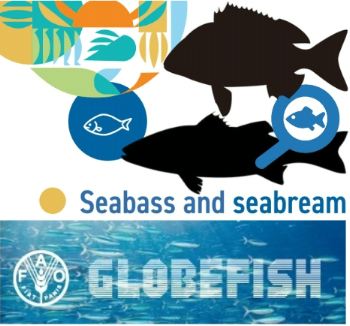
Photo: FAO/FIS
Globefish Report and Outlook for Seabream and Seabass
 WORLDWIDE WORLDWIDE
Wednesday, July 24, 2024, 01:00 (GMT + 9)
Trade and prices are stable; supplies are anticipated to increase In 2023, the global European seabass harvest experienced a slight decline, whereas gilthead seabream witnessed an increase of nearly three percent. Italy and Spain continued to be significant markets for both seabass and seabream, while the position of Türkiye as a top exporter of these two species was further reinforced.
Global production and consumption
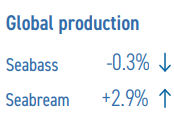 The global harvest of seabass declined marginally by 0.3 percent to 253 100 tonnes in 2023. On the other hand, seabream supply rose by about 2.9 percent to 311,600 tonnes. The global harvest of seabass declined marginally by 0.3 percent to 253 100 tonnes in 2023. On the other hand, seabream supply rose by about 2.9 percent to 311,600 tonnes.
Overall, the global consumption of seabass and seabream increased by two percent, with the Russian market reporting rises of 20 percent and 41 percent for seabass and seabream respectively, year-on-year. However, consumption in the United Kingdom of Great Britain and Northern Ireland experienced declines of eight percent for seabass and 10 percent for seabream in 2023 as compared to 2022.
Market and trade
Türkiye and Greece are the biggest exporters of seabass and seabream, primarily supplying the EU markets and the United Kingdom, among others.
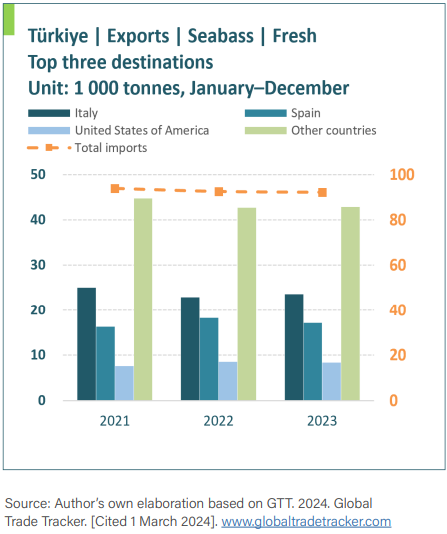
During January to October 2023, Türkiye earned USD 353 million in foreign currency income from seabream exports; and USD 435 million for seabass (some 73 percent as fresh fillets).
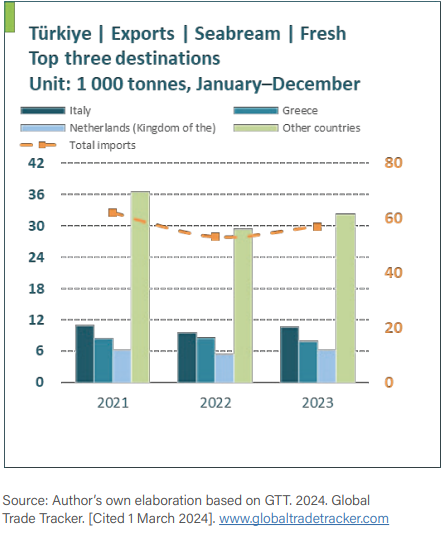
.png)
Italy remains a strong destination market for seabass and seabream. In 2023, seabass consumption in this market is estimated at 38,300 tonnes in total, down by six percent from the previous year. Greece and Türkiye were the biggest suppliers of seabass to the Italian market in 2023, both accounting for 31 percent respectively, followed by domestic supply ranking third at 23 percent. In the seabream market, Italy experienced a two percent increase in the overall supply in 2023 compared to the previous year. Greece and domestic producers led the list of suppliers, albeit with some slight decreases.
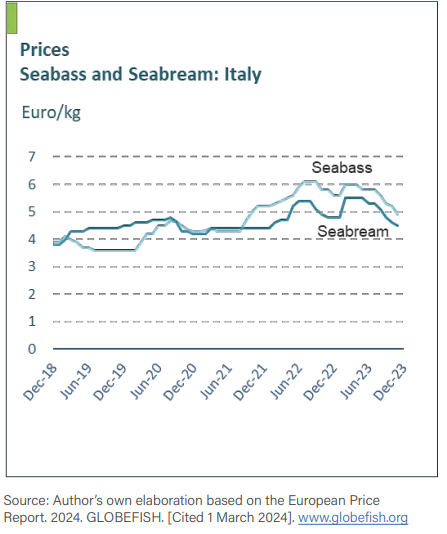
Spain, which had previously held a two percent seabream share in the Italian market in 2022, showed a notable supply increase of 12 percent in 2023.
The second biggest market, Spain, is estimated to have absorbed 33,700 tonnes of seabass and 43,700 tonnes of seabream in 2023. In the same year, Spanish demand for seabass showed a drop of eight percent from 2022 levels, with supplies mainly from domestic sources (38 percent), followed by Greece (33 percent) and Türkiye (27 percent). However, in December 2023, Spain experienced a substantial 21 percent year-on-year increase in seabass supply; this was driven by a 57 percent domestic supply surge following recovery from the storm Gloria, thereby indicating a positive supply trend for 2024. Meanwhile, the domestic seabream supply to the Spanish market dropped by 19 percent in 2023 over the previous year. France’s supply to Spain increased 64 percent year-on-year though the amount was a modest 280 tonnes.

Seabass from Turkiye
Prices
In the Spanish seabream market, the price of fresh whole seabream (300–400g) has risen from EUR 4.6 per kg in October 2023 to EUR 6.2 per kg in March 2024. Bigger sizes (400–600g) were priced at EUR 6.5 per kg in March 2024, up from EUR 4.5 per kg in November 2023. However, prices for 600g seabream have remained stable at around EUR 6.8 per kg from January 2023 till March 2024.
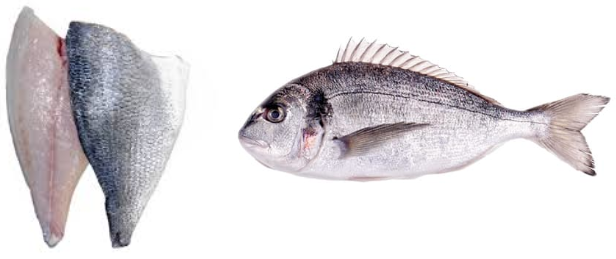
Seabream from Turkiye
In the seabass market, prices for large fresh whole fish (farmed) in Spain dipped below EUR 13 per kg in December 2023, then stabilized at EUR 13.8 per kg in the first quarter of 2024. Meantime, medium-sized seabass prices plummeted from a summer peak in 2023 of EUR 9.7 per kg to a record low of EUR 6.4 per kg in early 2024. In contrast, the prices for small sizes remained stable, increasing from EUR 5 per kg in November 2023 to EUR 5.7 per kg in early 2024.
Outlook
A rise in market activity for European seabass and gilthead seabream is anticipated in 2024, with expected positive supply growth. Türkiye, already a robust seabream exporter within Europe, is expected to expand its shipments to other global markets in 2024.
Source: Globefish/FAO
[email protected]
www.seafood.media
|



